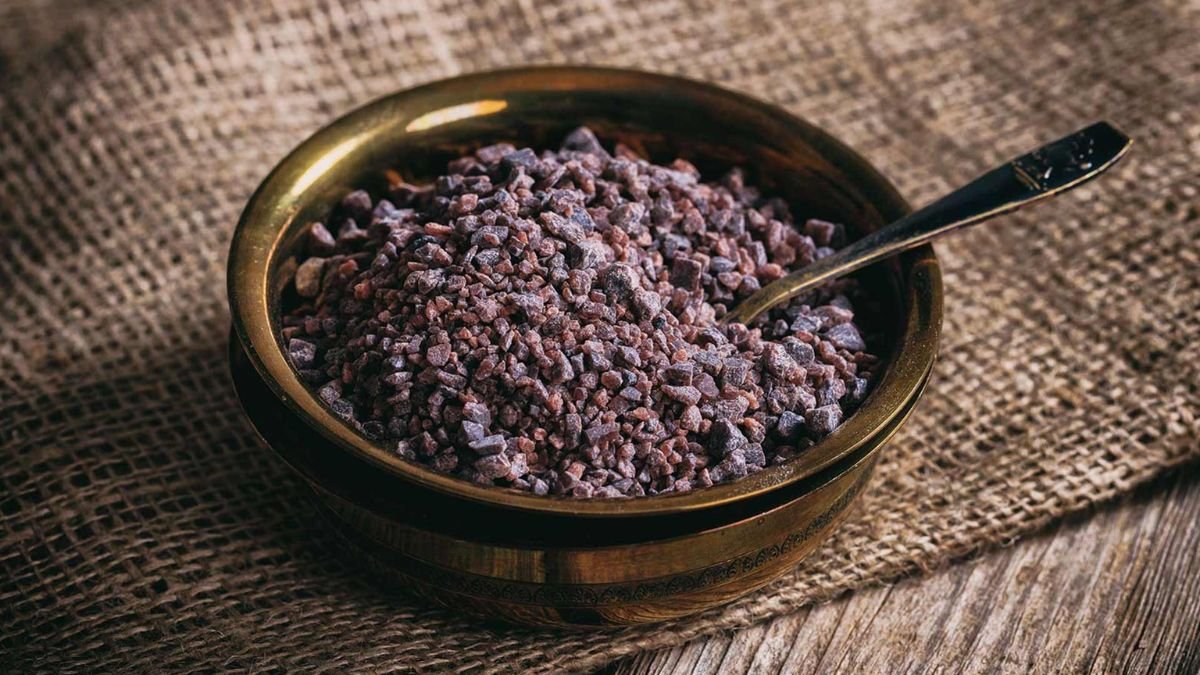All About Kala Namak (Black Salt) And 10 Amazing Facts
Kala namak, also known as black salt or Himalayan black salt, is a type of volcanic rock salt that is commonly used in Indian and Middle Eastern cuisine. It has a strong, pungent smell and a distinctive, slightly sour taste that makes it a popular ingredient in many dishes.
But kala namak is more than just a flavorful seasoning – it also has a number of health benefits. It is rich in minerals such as sodium, potassium, and magnesium, and it is also known for its ability to aid in digestion and improve respiratory problems.

So, what makes kala namak different from regular salt? Its unique flavor and color come from the high sulfur content found in the Himalayan mountain range where it is mined. The salt is formed from lava that has come into contact with sulfur-rich minerals, which gives it its black color and strong smell.
One of the most common uses for kala namak is in chaat masala, a popular spice blend used in Indian street food. It is also used in chutneys, sauces, and pickles, as well as in dishes such as omelets, raita, and vegetable dishes.
But kala namak is not just limited to Indian cuisine – it can also be used in a variety of dishes from around the world. For example, it is a common ingredient in many vegan and vegetarian dishes, as it adds a salty, egg-like flavor to dishes such as tofu scramble or vegan mayonnaise.
One of the key health benefits of kala namak is its ability to aid in digestion. The sulfur content of the salt helps to stimulate the production of digestive juices and enzymes, which can help to ease digestive issues such as bloating and constipation.
Kala namak is also known for its respiratory benefits. The sulfur content of the salt is thought to help clear the airways and improve respiratory problems such as asthma and allergies. It is also believed to help with sinus issues and to reduce the severity of colds and flu.
In addition to its digestive and respiratory benefits, kala namak is also rich in minerals such as sodium, potassium, and magnesium. These minerals are essential for maintaining good health and can help to regulate blood pressure, support muscle function, and improve bone health.
Despite its many health benefits, it is important to use kala namak in moderation, as it is still high in sodium. The American Heart Association recommends consuming no more than 2,300 milligrams of sodium per day, and kala namak contains around 2,600 milligrams of sodium per teaspoon.
So, how can you incorporate kala namak into your diet? One simple way is to sprinkle a small amount on top of salads, soups, and vegetables. It can also be used as a seasoning for grilled meats and seafood, or added to sauces and marinades for an extra punch of flavour.
Another way to use kala namak is in homemade seasoning blends. It pairs well with spices such as cumin, coriander, and turmeric, and can be mixed with these spices to create your own chaat masala or garam masala blend.
10 Amazing Facts on Kala Namak (Black Salt)
- Kala Namak is a type of Himalayan rock salt which is usually found in a black or dark purple hue.
- It is believed to have originated from the foothills of the Himalayas, especially in the regions of India and Pakistan.
- Kala Namak is said to have medicinal benefits since it is rich in minerals such as calcium, magnesium, potassium, and iron.
- It has a strong, pungent, and sulfurous aroma due to its high concentration of sulfates and hydrogen sulfide.
- It is often used as a condiment in India, Nepal, and Bangladesh and is known for its unique taste that is both salty and sour.
- It is also used in ayurvedic medicine to cure various ailments such as indigestion, flatulence, constipation, and headaches.
- Kala Namak is known to be rich in trace minerals, which makes it a great alternative to regular table salt.
- It has also been used as a natural hair dye, as its dark color can be used to give a deep black color to the hair.
- Kala Namak is also used as a key ingredient in many South Asian dishes such as chaat, samosa, and chutney.
- This type of salt is known to have detoxifying properties and can help improve digestion, reduce water retention, and balance the pH level of the body.
In conclusion, kala namak is a versatile and flavourful ingredient that can be used in a variety of dishes from around the world. It has a number of health benefits, including aiding in digestion and improving respiratory problems, and is rich in minerals such as sodium, potassium, and magnesium. Just be sure to use it in moderation, as it is high in sodium. So the next time you want to add some extra flavour and health benefits too..
Follow for more Bakasur …

